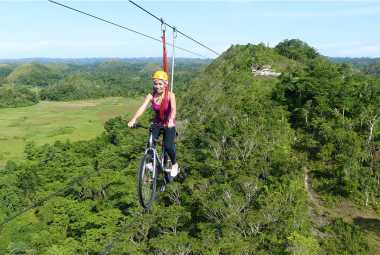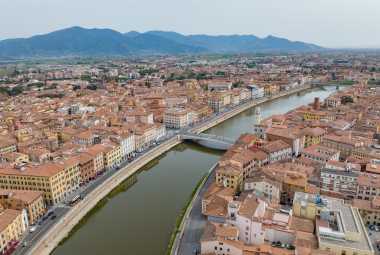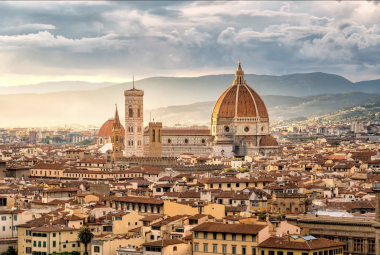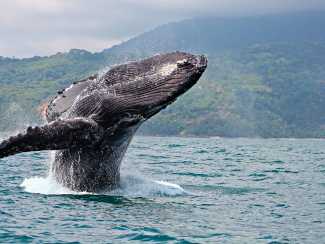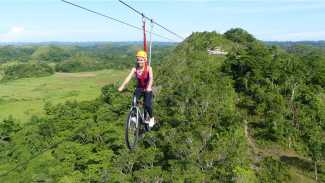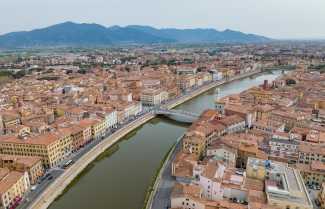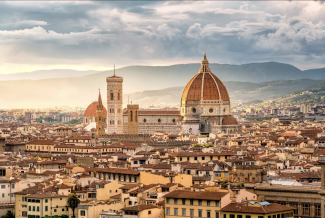Image by en.wikipedia.org
*Vacation Mode is a for-profit site. It contains paid banner advertisements that are generated and managed by a third-party network. This site also includes relevant affiliate links (both in the content and on the sidebar) all of which we do our best to clearly mark as such.
Costa Rica and Brazil are two captivating destinations, each offering unique experiences for travelers. To make an informed decision about your next vacation spot, it is important to consider various factors such as geographical features, climate, tourist attractions, cultural differences, cost of living, and safety and security.
Geographical Features and Climate:
1. Geographical Features of Costa Rica: Costa Rica is known for its diverse landscapes, including stunning beaches, lush rainforests, and impressive volcanoes. The country is home to several national parks and protected areas, showcasing its rich biodiversity.
2. Geographical Features of Brazil: Brazil, on the other hand, boasts expansive rainforests, including the renowned Amazon Rainforest. It also offers breathtaking coastlines, sprawling metropolises, and iconic landmarks such as the Christ the Redeemer statue in Rio de Janeiro.
3. Climate in Costa Rica: Costa Rica enjoys a tropical climate with two distinct seasons - the dry season and the rainy season. The weather is generally warm throughout the year, making it an ideal destination for sun-seekers and nature enthusiasts.
4. Climate in Brazil: Brazil's climate varies significantly across its vast territory. The north has a tropical climate with high temperatures, while the south experiences a subtropical climate with cooler winters. The country also has regions with a savannah climate and a semiarid climate. By considering the geographical features and climates of both destinations, you can determine which environment aligns better with your preferences and desired activities for your vacation.
Key Takeaways:
- Geographical features and climate vary: Costa Rica boasts lush rainforests and biodiversity, while Brazil offers diverse landscapes including the Amazon rainforest and Pantanal wetland. Costa Rica enjoys a tropical climate, while Brazil has a wider climate range due to its size.
- Tourist attractions cater to different interests: Costa Rica offers eco-tourism opportunities, with activities such as hiking through national parks, while Brazil attracts tourists with its vibrant cities, stunning beaches, and renowned Carnaval celebrations.
- Cultural differences add uniqueness: Costa Rica showcases its "pura vida" philosophy and laid-back lifestyle, while Brazil embraces its rich cultural heritage, blending indigenous, African, and European influences, resulting in a lively and diverse culture.
Costa Rica Travel Guide
Video by: Before You Go
Brazil Travel Guide
Video by: Before You Go
Geographical Features and Climate
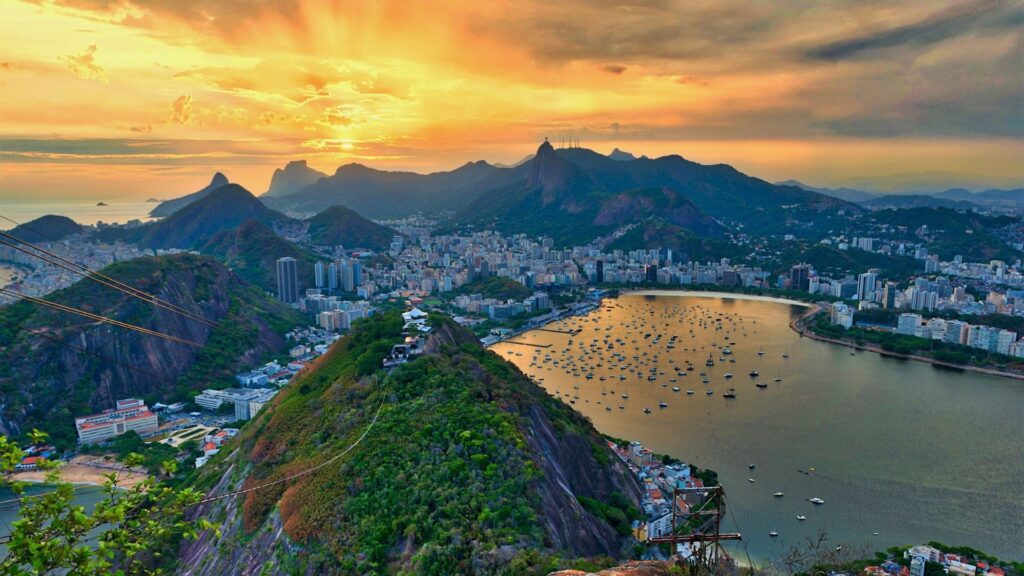
The geographical features and climate of Costa Rica and Brazil paint contrasting pictures of these two stunning countries. From lush rainforests to breathtaking coastlines, Costa Rica's geographical features offer a diverse playground for nature lovers. Meanwhile, Brazil showcases a myriad of landscapes, including the vast Amazon rainforest and towering mountains like the iconic Sugarloaf. As for climate, Costa Rica experiences a tropical climate with distinct wet and dry seasons, while Brazil's climate varies from equatorial in the north to subtropical in the south. Let's explore these geographical wonders and climates in more detail.
Geographical Features of Costa Rica
Costa Rica is a unique and diverse country known for its geographical features. The Central Mountain Range and the Talamanca Range are just a few of the majestic mountains that can be found here. Moreover, there are several active and dormant volcanoes, including Arenal and Poas, which add to the country's allure. Costa Rica's coastline is truly breathtaking, with both Pacific and Caribbean coasts. Visitors can enjoy stunning beaches and experience the richness of marine life. Another remarkable feature is the abundance of rainforests, among them the famous Monteverde Cloud Forest and Corcovado National Park. These lush rainforests contribute to the country's incredible biodiversity. Costa Rica is also blessed with numerous rivers, such as the Tempisque and the Sarapiqui, which offer exciting water activities like rafting and kayaking. Truly, the geographical features of Costa Rica make it an exceptional destination.
Geographical Features of Brazil
- Brazil, known for its diverse geography, boasts a number of geographical features that make it a unique destination. Some of these prominent features include:
- The Amazon Rainforest: Renowned as the world's largest rainforest, it covers a significant portion of Brazil and is characterized by unparalleled biodiversity and unique ecosystems.
- The Pantanal Wetlands: Situated in western Brazil, this is the largest tropical wetland globally and serves as a habitat for a wide variety of wildlife, including jaguars, capybaras, and caimans.
- The Iguazu Falls: These magnificent waterfalls straddle the border between Brazil and Argentina and are considered one of the most awe-inspiring natural wonders worldwide.
- The Atlantic Coastline: With over 7,000 kilometers of coastline, Brazil showcases beautiful beaches, iconic cities like Rio de Janeiro, and vibrant coastal ecosystems.
Pro tip: When planning a trip to Brazil, make sure to explore its diverse geography in order to fully appreciate the country's natural beauty and ecological wonders.
Climate in Costa Rica
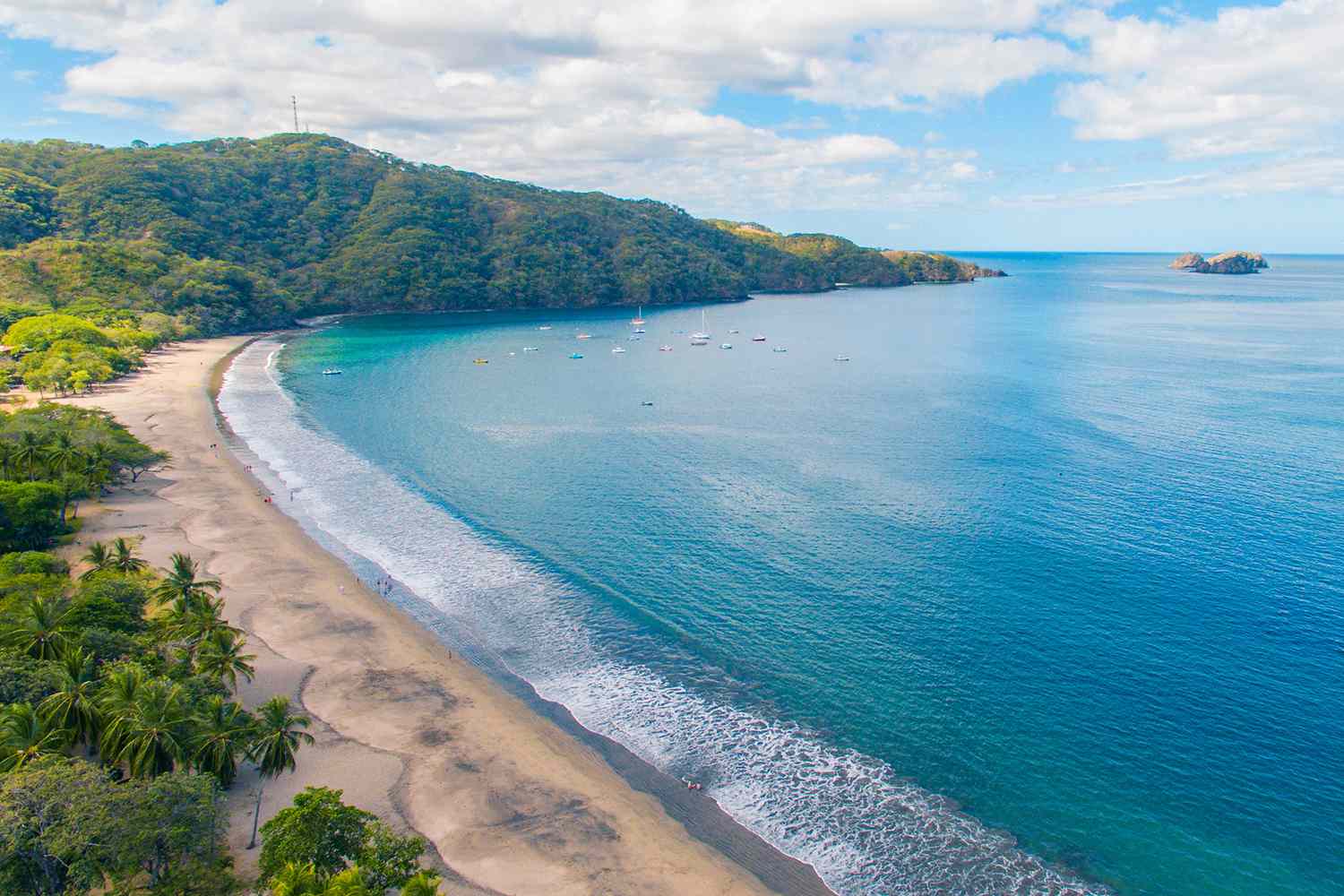
Costa Rica has a climate in Costa Rica with two distinct seasons: the dry season and the rainy season. The dry season in Costa Rica typically lasts from December to April, characterized by sunny days and minimal rainfall. During this time, the climate in Costa Rica is ideal for outdoor activities and exploring its lush rainforests. The rainy season in Costa Rica, which also falls under the climate in Costa Rica, lasts from May to November. It experiences heavier rainfall, creating beautiful green landscapes that are also part of the climate in Costa Rica. It's important to note that the climate in Costa Rica can vary depending on the region. For instance, the coastal areas tend to be hotter and more humid, while the highlands offer cooler temperatures as part of the climate in Costa Rica. The climate in Costa Rica offers a diverse experience for visitors to enjoy.
True story: During my trip to Costa Rica, I was in awe of the climate in Costa Rica. Every morning, the warm sun greeted me as I stepped outside, and I couldn't resist exploring the stunning rainforests that are part of the climate in Costa Rica. One day, while hiking through a dense jungle as part of the climate in Costa Rica, I encountered a sudden downpour. The rain was refreshing, and it made the vibrant greenery around me even more vibrant, showcasing the unique charm of the climate in Costa Rica. It was an unforgettable experience that highlighted the climate in Costa Rica's unique charm.
Climate in Brazil
Brazil has a diverse climate due to its size and geographical features. The Climate in Brazil varies from region to region. In terms of climate in Brazil, the northern part of the country has a mainly tropical climate, with high temperatures and rainfall throughout the year. In the central regions, there is a more temperate climate with distinct seasons, including hot summers and cooler winters. Meanwhile, the southern parts of Brazil experience a subtropical climate, with mild winters and warm summers. This diverse range of climates in Brazil offers countless opportunities for outdoor activities and tourism, such as exploring the Amazon rainforest or enjoying the stunning beaches.
Tourist Attractions
Looking for breathtaking tourist attractions in either Costa Rica or Brazil? Look no further! Get ready to be mesmerized as we explore the must-visit spots in these two stunning destinations. From the lush rainforests and pristine beaches of Costa Rica to the vibrant cultural sites and vibrant cities of Brazil, we'll uncover the unique beauty and experiences each country has to offer. So pack your bags and join us on this virtual tour of Costa Rica's and Brazil's top tourist attractions.
Costa Rica's Tourist Attractions
Costa Rica's tourist attractions offer a diverse range of options that cater to different interests. From stunning national parks like Manuel Antonio and Tortuguero, where you can spot abundant wildlife and explore lush rainforests, to the beautiful beaches of Tamarindo and Montezuma, perfect for surfing and relaxation. For adventure seekers, activities like ziplining in Arenal or white-water rafting in the Pacuare River are must-dos. Don't miss out on visiting the iconic Arenal Volcano or exploring the fascinating Monteverde Cloud Forest Reserve. With its rich biodiversity and natural beauty, Costa Rica truly has something for everyone.
Fun fact: Costa Rica is home to more than 5% of the world's biodiversity.
Brazil's Tourist Attractions
In Brazil, you can find a variety of tourist attractions that are sure to suit different interests and preferences. When planning a trip to Brazil, be sure to consider the following noteworthy attractions:
|
These attractions highlight the diverse landscapes, cultural heritage, and natural beauty that make Brazil an enticing destination for travelers.
Cultural Differences
Cultural Differences in Costa Rica and Brazil: Get ready to dive into the rich tapestry of Costa Rican and Brazilian cultures. From the vibrant traditions of Costa Rican culture to the rhythmic beats of Brazilian customs, we'll explore the unique aspects that define these two nations. Discover the flavors, music, and customs that make each culture distinct, and gain a newfound appreciation for the diversity and beauty that exists within these vibrant societies.
Costa Rican Culture
Costa Rican Culture is highly diverse and opulent, exemplifying influences from native traditions and Spanish heritage. This vibrant and lively Culture is characterized by a firm emphasis on family values, community, and warm hospitality. The cultural identity of this country is seen in its traditional music, including the melodic notes of marimba and tambito, as well as in the elegant movements of folk dances like the famous Punto Guanacasteco. Furthermore, a sense of pride is held by Costa Ricans for their exquisite and mouthwatering cuisine, which consists of delectable dishes such as gallo pinto and casado. Also, a noteworthy aspect of Costa Rican Culture is the unwavering dedication towards environmental conservation and sustainability. This commitment is evident in their globally renowned ecotourism industry and the tireless efforts made to safeguard their diverse ecosystems and wildlife.
Brazilian Culture
Brazilian Culture is exceptionally diverse and abundant, stemming from the country's multicultural heritage. The tapestry of this rich culture is influenced by indigenous, African, and European traditions, resulting in an exuberant and distinctive cultural experience. Renowned worldwide for its infectious rhythms and melodies, Brazilian music, such as samba and bossa nova, reflects the vibrant spirit of the nation. Equally captivating is the country's cuisine, which showcases the unique flavors of Brazil through dishes like feijoada (a black bean stew) and pão de queijo (cheese bread). An excellent example of Brazil's lively and celebratory nature is Carnival, an annual event held in Rio de Janeiro. For visitors, immersing themselves in the art, dance, food, and festivals of Brazilian culture or Costa Rica is an absolute must.
Cost of Living
Living costs can vary greatly depending on the destination. In this section, we'll dig into the cost of living in Costa Rica and Brazil, offering insights into the financial aspects of these countries. Discover which country offers a more affordable lifestyle, uncover key factors such as housing, food, and transportation, and gain a deeper understanding of the expenses associated with living in these vibrant nations. Let's explore the realities of the cost of living in Costa Rica and Brazil.
Cost of Living in Costa Rica
The cost of living in Costa Rica can vary depending on factors such as location, lifestyle, and housing choices. When assessing the cost of living in Costa Rica, it is important to consider all aspects including housing, utilities, transportation, food, and healthcare.
Housing costs in Costa Rica range from $400 to $2,000 per month, depending on the location and size of the property. Monthly expenses for electricity, water, and internet average around $100 to $150. Public transportation is affordable, with bus fares costing around $1 per trip. However, owning a car may require additional expenses for fuel, insurance, and maintenance.
Grocery costs in Costa Rica are reasonable, with fresh produce and local staples being more affordable than imported goods. In terms of healthcare, Costa Rica offers quality services at lower costs compared to the United States. Private health insurance plans start at around $50 per month.
While the cost of living in Costa Rica can be lower compared to some countries, it is important to budget accordingly and consider individual circumstances and lifestyle choices. The cost of living in Costa Rica is influenced by various factors, but with proper planning and budgeting, it can be a suitable place for individuals to reside.
Cost of Living in Brazil
The cost of living in Brazil is relatively affordable compared to many other countries. The Cost of Living in Brazil can vary depending on the location, with major cities like São Paulo and Rio de Janeiro generally being more expensive. Food and transportation costs in Brazil are also reasonable, with a variety of options available for every budget. Brazil also offers affordable healthcare, though private healthcare can be more expensive. Overall, Brazil offers a range of options for individuals with different financial circumstances. If you're looking to live in a vibrant and diverse country without breaking the bank, Brazil is a favorable choice for the Cost of Living in Brazil.
Safety and Security
When it comes to safety and security, Costa Rica and Brazil each have their own unique features. Dive into the world of safety in these destinations as we uncover the reality, precautions, and measures you need to be aware of. From navigating the serene landscapes of Costa Rica to exploring the vibrant streets of Brazil, we'll discover the distinct aspects of safety in each place. Stay tuned to ensure you have accurate information to make informed decisions for your upcoming travel plans.
Safety in Costa Rica
Safety is of utmost importance when traveling to Costa Rica. While the country is widely considered safe, it is essential to take necessary precautions. Always be mindful of your surroundings and avoid flaunting valuable items. Stick to well-populated areas, especially at night, and utilize reliable transportation services. Safeguard your important documents and prized possessions. Stay updated about safety advisories or warnings issued by local authorities and diligently adhere to their instructions. By remaining vigilant and implementing precautionary measures, you can ensure a secure and pleasant experience exploring the breathtaking landscapes and vibrant culture that Costa Rica has to offer.
In recent years, Costa Rica has witnessed a decline in crime rates and has made substantial efforts to ensure the safety of both its citizens and tourists. The government has introduced various initiatives to combat organized crime and the illegal drug trade. These measures, coupled with heightened security and policing endeavors, have greatly contributed to the overall safety of the country. The presence of dedicated tourist police and the establishment of tourist assistance centers further enhance a secure environment for visitors.
Safety in Brazil
Safety in Brazil can be a major concern for travelers, requiring caution in certain areas. With proper awareness and preparation, a trip to Brazil can still be enjoyable. It is advised to stay alert, avoid displaying valuable possessions, and use licensed taxi services to ensure safety. It is recommended to research and follow the travel advisories provided by your country's government for updated safety information. By taking these necessary precautions, tourists can minimize risks and have a safe experience exploring Brazil's diverse attractions and vibrant culture while prioritizing safety.
Some Facts About Costa Rica and Brazil:
- ✅ Brazil has a much larger area than Costa Rica. (Source: Our Team)
- ✅ The official language in Brazil is Portuguese, while Costa Rica's official language is Spanish. (Source: Our Team)
- ✅ Brazil has a much larger population than Costa Rica. (Source: Our Team)
- ✅ Costa Rica generally performs better than Brazil in terms of quality of life. (Source: Our Team)
- ✅ Costa Rica has a higher average income than Brazil. (Source: Our Team)
Frequently Asked Questions
Should I visit Costa Rica or Brazil for a 9-day trip in October?
It depends on what you are looking for. Brazil has a larger area and population, offering diverse landscapes and vibrant cities like Rio de Janeiro. Costa Rica, on the other hand, is known for its stunning natural beauty and eco-tourism opportunities. Both countries have their unique charm, so consider your preferences and interests when making a decision.
Can I have a good time and do some sightseeing while traveling solo?
Absolutely! Both Costa Rica and Brazil offer plenty of opportunities for solo travelers to have a memorable experience. From exploring lush rainforests and relaxing on beautiful beaches in Costa Rica to visiting iconic landmarks and immersing yourself in the vibrant culture of Brazil, you'll find a wide range of activities and attractions to enjoy.
I speak some Spanish but no Portuguese. Will language be a barrier in either country?
While Portuguese is the official language of Brazil and Spanish is spoken in Costa Rica, you should generally be able to get by with basic Spanish in Brazil, especially in tourist areas. In Costa Rica, your Spanish skills will come in handy for communicating with locals. Learning a few common phrases in Portuguese or Spanish can greatly enhance your travel experience, but language barriers shouldn't prevent you from enjoying your trip.
Any suggestions for my 9-day trip to Costa Rica or Brazil?
Here are a few itinerary suggestions for both countries: - In Costa Rica, consider spending a few days exploring the Arenal Volcano, visiting the vibrant capital city of San José, and relaxing on the beautiful beaches of Manuel Antonio National Park. - In Brazil, start your trip in Rio de Janeiro, exploring iconic sites like Christ the Redeemer and Sugarloaf Mountain. Then, head to the Amazon rainforest for a unique wildlife experience, and wrap up your trip by relaxing on the stunning beaches of Florianopolis or Salvador.
How do Costa Rica and Brazil compare in terms of quality of life?
Costa Rica generally performs better than Brazil in terms of quality of life indicators. Costa Rica has higher scores in political stability, civil rights, and climate. However, Brazil has a slightly higher score in health. Keep in mind that these are general assessments, and individual experiences may vary.
What are the main differences in the economy between Costa Rica and Brazil?
Costa Rica has a higher average income and slightly lower cost of living compared to Brazil. However, Brazil has a higher gross domestic product (GDP) and gross national product (GNP) along with higher exports and imports of goods. Brazil also has a larger road network, more passenger airports, and a higher energy production capacity and consumption.
Things to do in Costa Rica
Things to do in Brazil



